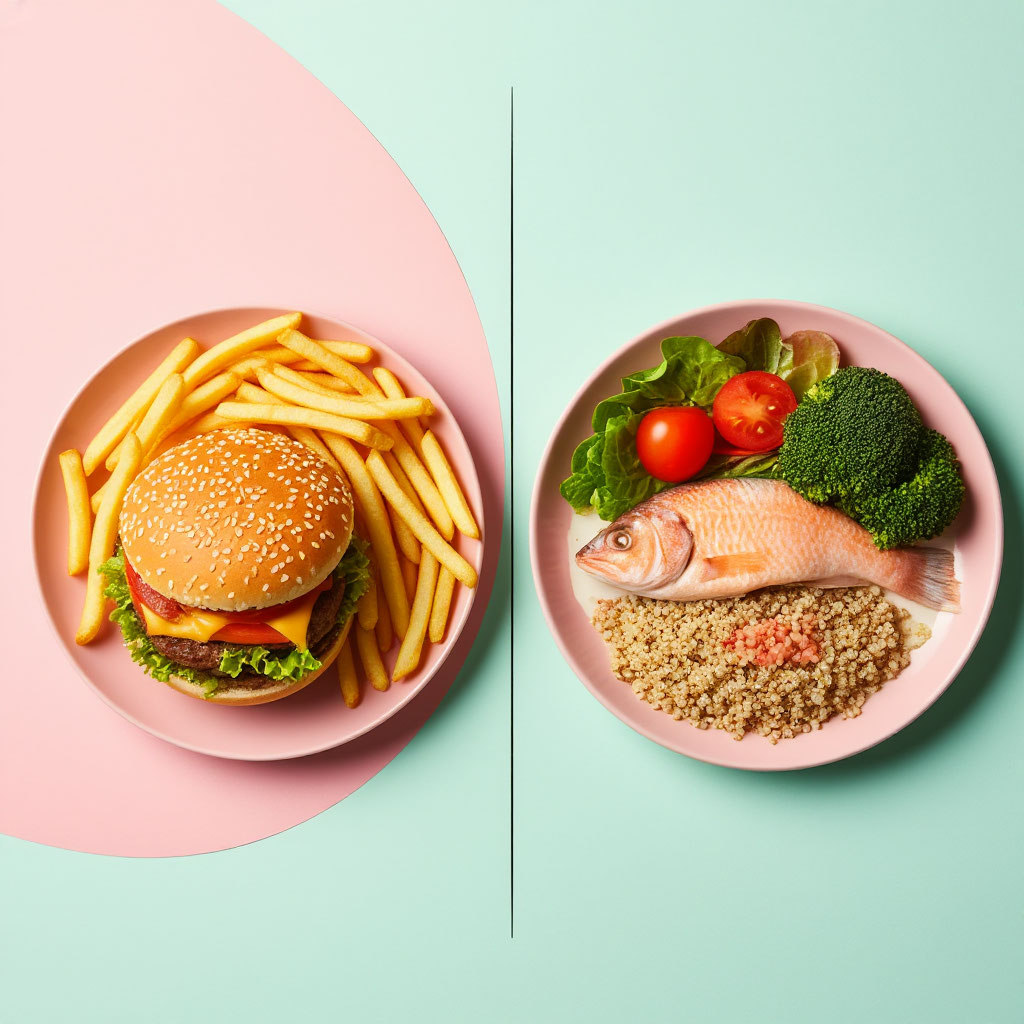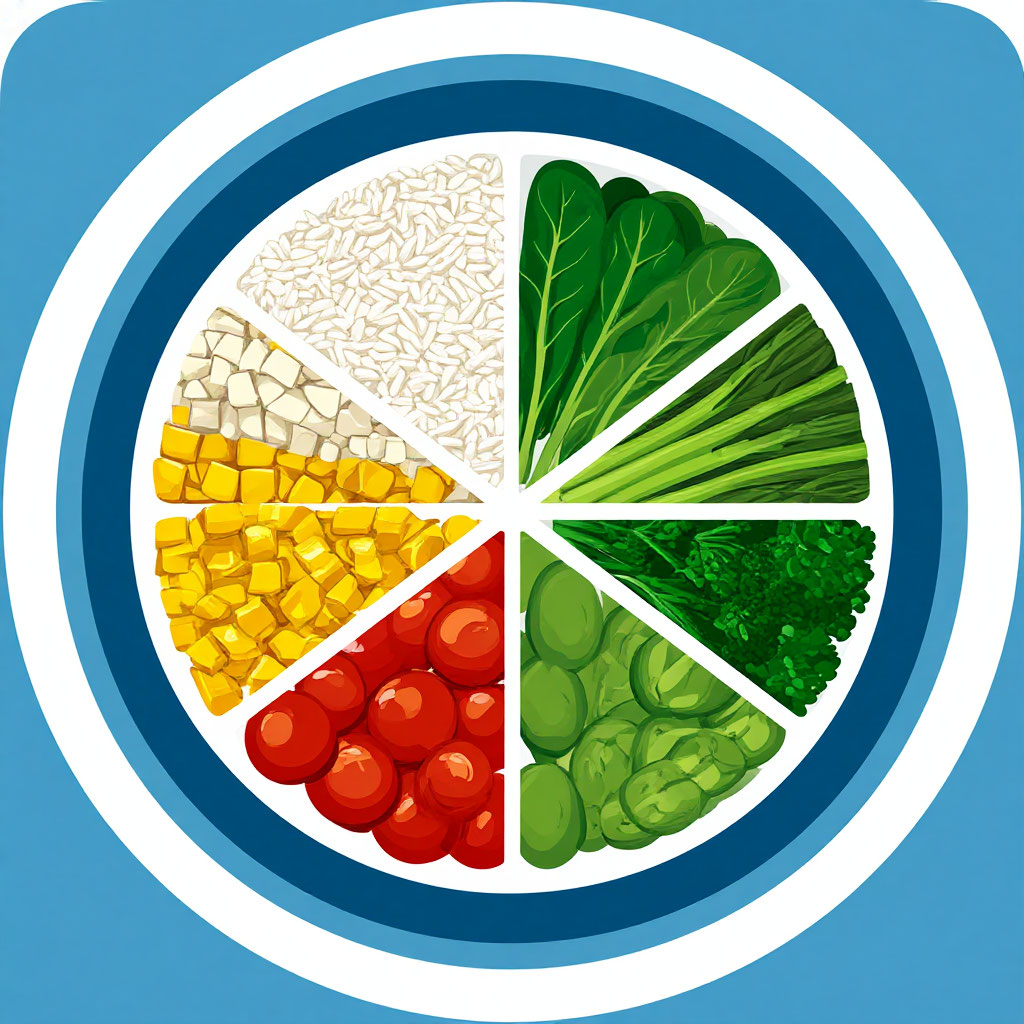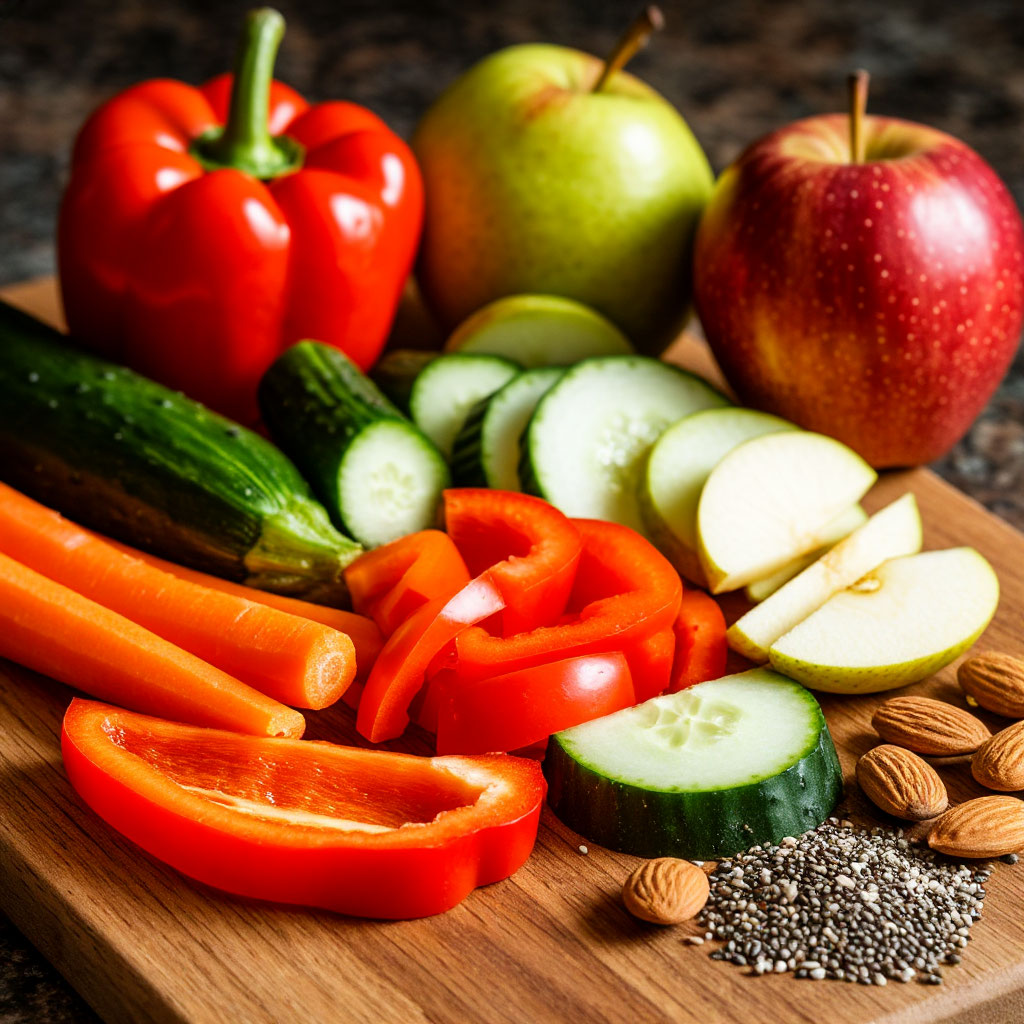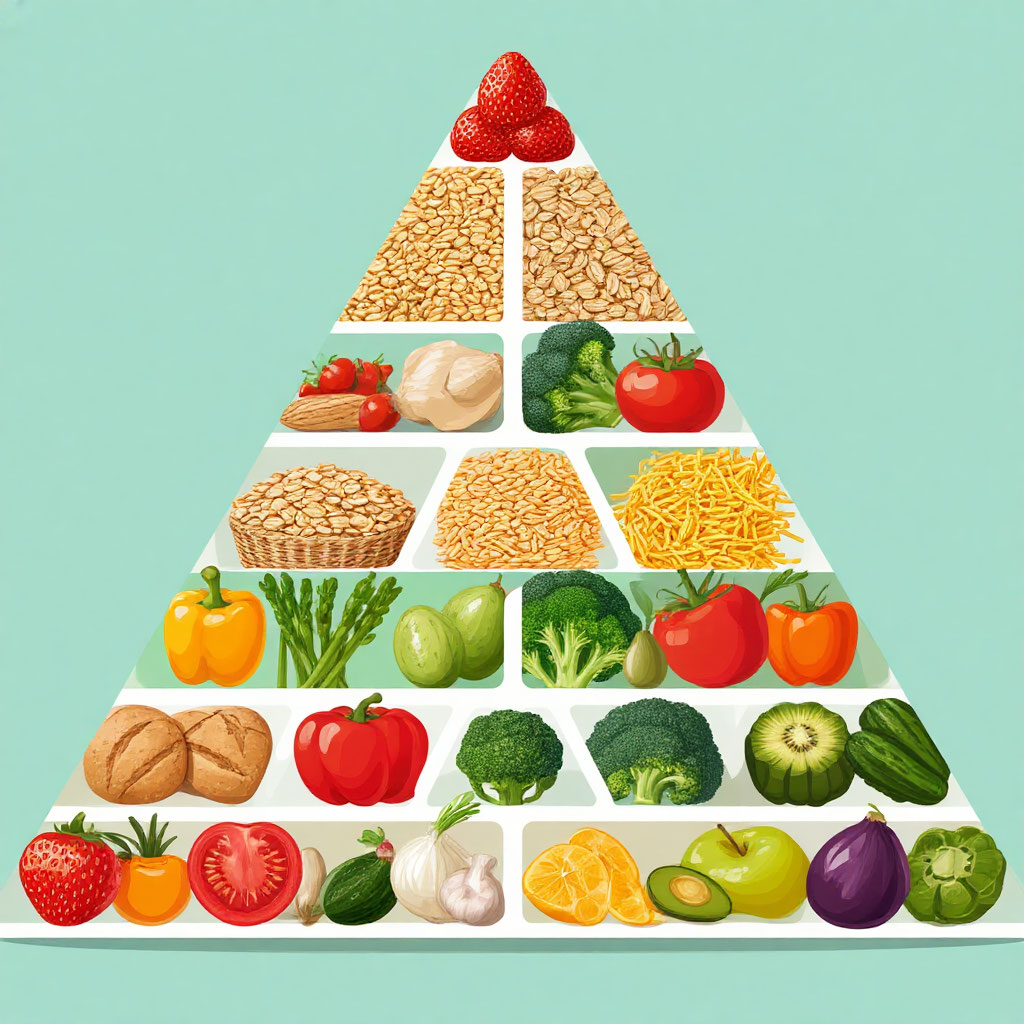
When it comes to what a healthy diet is, many people imagine broccoli, endless salads and a complete rejection of everything delicious. But in practice, everything can be made easier and more enjoyable! A healthy diet is not about strict restrictions, but a balanced diet that provides energy, supports the body and leaves room for your favorite treats.
You just need to learn how to choose healthy foods, listen to your body and not go to extremes. Where to start, how to avoid common mistakes and make proper nutrition a part of a comfortable life.
Starting with healthy eating can be simple. We prepared a Beauty Club mini-brochure with the Plate Method, easy portion cues, a pantry starter list, smart swaps, a 7-day plan, snack ideas, hydration tips, and common mistakes to avoid. You’ll find a PDF download at the end of this article to save and print.
Definition of healthy eating: we understand the basic concepts
When a person first thinks about switching to a proper diet, they are immediately overcome with doubts. It seems that you will have to say goodbye to your favorite dishes forever and turn your meal into a boring routine. But what is a healthy diet really? These are not strict prohibitions or starvation diets, but a well-thought-out system that helps the body get everything it needs to work properly.

Basic principles that change the way you think about food
The essence of healthy eating is a conscious approach to menu formation. There is no place for radical methods – only a smooth transition to new eating habits. It is important to understand what a healthy diet is in the modern interpretation: this is a balance between taste and benefits, between traditional dishes and new healthy alternatives.

How to distinguish myths from reality?
There are many misconceptions around the topic of proper nutrition. Some people think that a healthy diet is necessarily expensive, others are sure that you will have to stand at the stove for hours. To understand what a healthy diet is, you can use simple criteria: it should be accessible, diverse, and fun. You just need to learn how to make the right choice in a regular supermarket and not turn the cooking process into a feat.
Why does this work?
The secret to the effectiveness of a healthy diet is simple – it takes into account the natural needs of the body. When a person begins to understand what a healthy diet is in practice, he discovers that this is not a complex science, but a logical system. It is enough to remember a few basic principles of food compatibility, learn how to identify high-quality ingredients and observe moderation in portions.

It is better to start switching to a new power supply system gradually. To begin with, you should just observe your current habits, then make small adjustments. For example, replace one unhealthy snack with a healthy alternative or add an extra portion of vegetables to your diet. Over time, it will become clear that such a healthy diet in everyday life is convenient and not burdensome at all.
Basic principles: how the healthy food system works
To understand what a healthy diet is, you need to learn the main rule — harmony between proteins, fats and carbohydrates. The body cannot fully function if a certain component is completely excluded. The basics of proper nutrition are based not on prohibitions, but on the proper distribution of nutrients. For example:
- your morning meal may include complex carbohydrates;
- lunch — protein component;
- dinner — light vegetables with healthy fats.

Regularity and moderation
One of the key mistakes is skipping meals in the hope of saving calories. In fact, this approach leads to overeating in the evening. A health diet involves 4-5 meals a day in small portions. This keeps your energy levels stable and prevents blood sugar spikes.
Diversity as a guarantee of use
A monotonous menu quickly gets boring and deprives the body of important trace elements. The nutrition pyramid helps you create a balanced menu: the base is cereals and vegetables, then fruits, proteins, dairy products, and at the top — healthy oils and rare desserts. The more healthy food options you have on your daily menu, the more likely you are to get all the vitamins you need.

Individual approach
There is no one-size-fits-all plan. Some people feel better on a high-protein diet, others need more fiber, and others need a special regime due to their health. The basics of proper nutrition require attention to the body’s signals: if there is discomfort after a certain meal, you should reconsider the choice of ingredients.
Simplicity and convenience
Many people imagine a health diet as something complex and requires culinary skills. In fact, basic dishes can be easy to prepare. For example, baked vegetables with fish or cottage cheese with berries — this is an example of what a healthy diet is without unnecessary hassle.

What to include in your diet: building a menu consciously
When forming a health diet, focus on natural and minimally processed ingredients:
- Fresh vegetables and fruits form the foundation of the nutrition pyramid, providing the body with fiber and vitamins.
- Cereals and whole grains provide the necessary energy.
- High-quality proteins from meat, fish and legumes support muscle tissue.

How to combine products correctly
The basics of proper nutrition involve proper combinations of ingredients. Vegetables perfectly complement protein dishes, improving their absorption. Fruit is best consumed separately or combined with healthy fermented milk products. Vegetable fats perfectly harmonize with herbs and root vegetables, revealing their taste and nutritional value.
Seasonality and diversity
Understanding what a healthy diet is, it is easy to notice that the most valuable products appear in their season. Summer berries, autumn pumpkins, winter citrus fruits and spring greens naturally enrich the menu. This approach not only saves the budget, but also provides the body with the necessary substances for a specific period.

Where to find a replacement for harmful products
Modern supermarkets offer a variety of alternatives to traditional junk food. Whole-grain flour instead of refined flour, natural yogurt instead of sweet desserts, dried fruits instead of sweets – all these are elements of a health diet. Carefully study the composition, because not all ‘diet’ products are really useful.
Sample menu for the day, demonstrating what a healthy diet is:
- Breakfast can include porridge with nuts and berries.
- Lunch — vegetable soup and baked fish with herbs.
- For an afternoon snack, cottage cheese with honey is suitable.
- Dinner — light salad with avocado.
This menu follows the principles of the nutrition pyramid and contains all the necessary nutrients.

Common mistakes of beginners: how not to spoil a good start
Many people, having learned what a healthy diet is, immediately rush to extremes. Complete rejection of sweets, exclusion of all fats or switching to only vegetables – such drastic measures have the opposite effect. The body perceives this as stress, which often leads to overeating. The basics of proper nutrition involve smooth changes, not revolutionary prohibitions.
Underestimating the importance of protein
When forming a health diet, beginners often focus on vegetables and fruits, forgetting about protein components. However, they help to maintain a feeling of satiety and maintain muscle mass. The inclusion of healthy foods with a high protein content is a prerequisite for a balanced menu.

Obsession with counting calories
Although monitoring the energy value of food is important, too much attention to numbers make it difficult to understand what a healthy diet is in practice. Food quality and nutritional value are more important than empty calories. The nutrition pyramid clearly shows that 500 kcal from vegetables and cereals is healthier than the same 500 kcal from sweets.
Ignoring the water balance
Beginners often forget that fluids are an essential part of a healthy diet. Lack of water:
- slows down your metabolism;
- causes fatigue;
- provokes a false sense of hunger.
At the same time, tea, coffee and juices do not replace clean water, which is necessary for the proper functioning of the body.

Uncontrolled craze for “superfoods”
Trendy goji berries, chia seeds, or spirulina are considered healthy foods, but they are not a panacea. Trying to build your entire diet around expensive exotic ingredients is a common mistake. The basics of proper nutrition remind you that local seasonal vegetables and fruits are often as valuable as their overseas counterparts.
Blindly following trends
Each organism is unique, and what is perfect for one may not work for another. To understand what a healthy diet is, you need to listen to your own feelings, and not mindlessly copy someone else’s experience. If some popular approach causes discomfort, it may simply not be suitable for a particular person.

Good Habits: Turning theory into a way of life
Understanding what a healthy diet is begins with a change in approach to food. Instead of strict restrictions, it is better to develop the habit of analyzing the composition of products before buying. Reading labels becomes a natural process to help you choose quality ingredients for your health diet. This approach preserves the freedom of choice without compromising the benefits.
Diet as a basis for stability
The basics of proper nutrition emphasize the importance of regular meals. The body works better when it receives food at certain hours. Developing a clear nutrition schedule helps to avoid harmful snacking and helps to normalize digestion. Over time, this ceases to be a duty, turning into a comfortable routine.

Culinary experiments with benefits
Turning cooking into a creative process is a great way to diversify your food pyramid. Experiments will make switching to a new diet an exciting adventure:
- try a new vegetable;
- learn an unusual way to prepare the usual healthy foods;
- create an author’s version of a classic dish.
Flexibility in special cases
Strict prohibitions often cause disruptions. Knowing what a healthy diet is, you can allow yourself small deviations from the rules during holidays or special moments. Try to make sure that such cases remain an exception, and do not turn into a system. After a small digression, you can always return to your usual health diet.

Water as a mandatory component
When forming the basics of proper nutrition, you should not forget about a sufficient amount of liquid. Carrying a water bottle, a glass before a meal, and replacing some of your coffee and tea with clean water are simple actions that quickly become automatic. It does not require much effort, but it improves your well-being.
Link between nutrition and activity
Physical activity naturally complements the nutrition pyramid. Taking a walk after a meal, exercising in the morning, or stretching in the evening helps you absorb healthy foods better. Such comprehensive self – care enhances the positive effect of changes in the menu.

Dietitian’s advice: professional recommendations for everyone
Nutrition experts point out that there are no universal solutions. What is perfect for one person may not be useful for another. Professionals recommend starting with a deep understanding of what a healthy diet is in a particular case, taking into account three key factors:
- Age and physiological characteristics.
- Daily activity level.
- Individual food intolerances.
This approach helps to develop a personalized plan that meets the actual needs of the body.

Gradual changes are the key to success
Drastic changes in eating habits often lead to stress. The basics of proper nutrition from professionals always include the principle of gradualness. Instead of radical changes, it is better to implement 2-3 small changes weekly. Allow your body to adapt to a new health diet without discomfort, while keeping you motivated.
Quality is more important than calorie counting
Experienced nutritionists focus on the quality of ingredients. When choosing healthy foods with natural ingredients, don’t focus on numbers. The nutrition pyramid clearly shows that nutritional value is always more important than empty calories. Experts recommend that you study the composition, and not trust the advertising labels.

Flexibility in compliance with the principles
Strict bans rarely have a long-term effect. Nutritionists advise maintaining reasonable flexibility, being aware of what a healthy diet without extremes is. It is better to allow yourself small digressions sometimes than to break down later. Such moments should remain an exception.
Water is the basis of metabolism
Professionals are unanimous: adequate water intake is a prerequisite for proper metabolism. The basics of proper nutrition always include recommendations on the drinking regime. Starting your day with a glass of water is a simple but effective tip.

Regularity as the basis of a habit
Experts insist on a systematic approach. Irregular adherence to the principles of a healthy diet does not give stable results. Nutritionists recommend developing sustainable habits that will naturally fit into your lifestyle.
Switching to the right diet does not require heroic efforts. What is healthy eating in practice? This is a balanced approach, where there is a place for both benefits and pleasure. Starting with small — adding healthy foods, following a drinking regimen, and gradually changing your habits-can achieve noticeable results without stress.
The basics of proper nutrition become a natural part of life when they are perceived not as limitations, but as a conscious choice in favor of energy and well-being. Move at your own pace and enjoy the process!
Build better meals without strict rules: balance your plate, stock a smart pantry, and use our mix-and-match 7-day plan to get started.
Download the brochure (PDF): Beauty Club — Healthy Eating Basics



